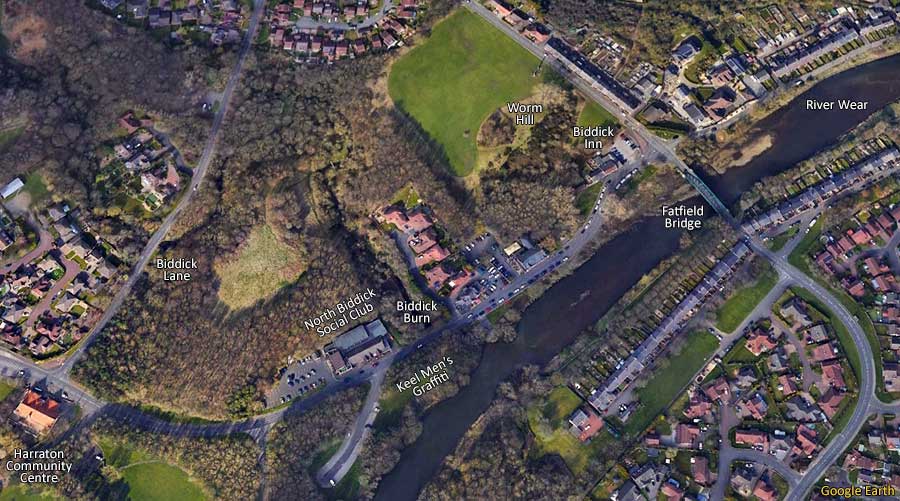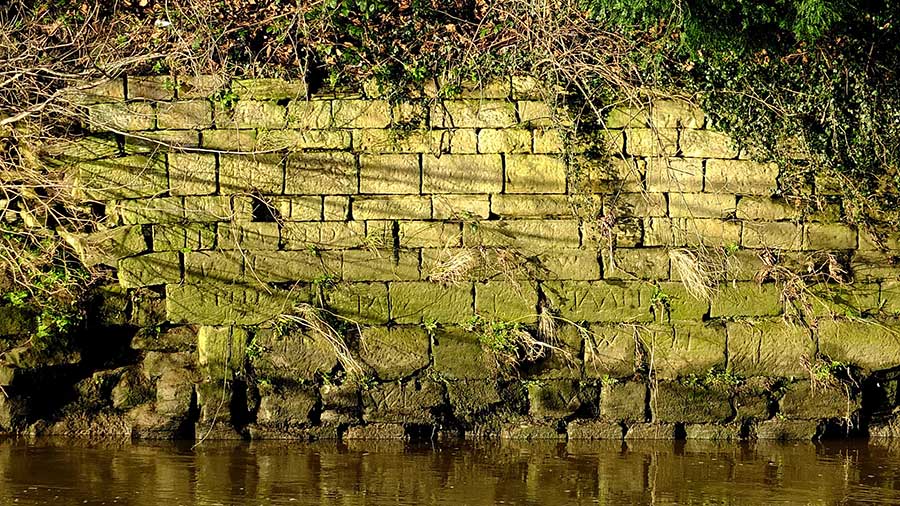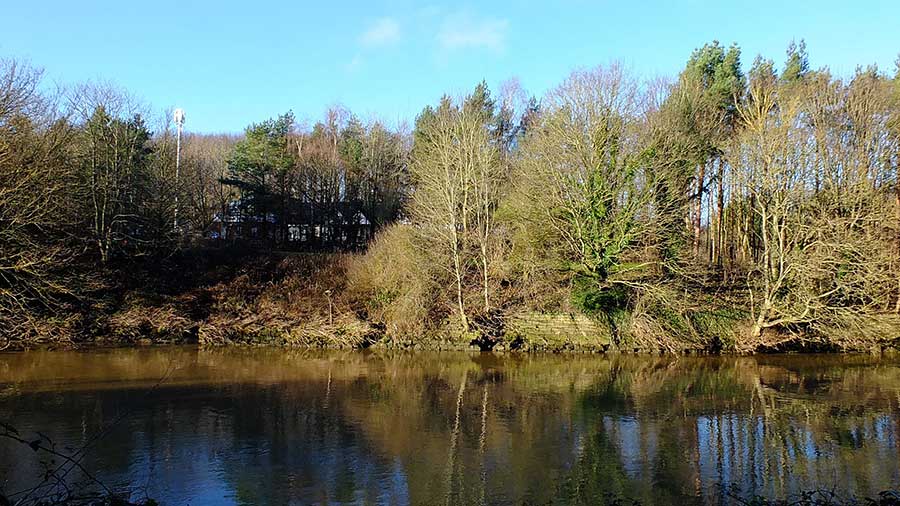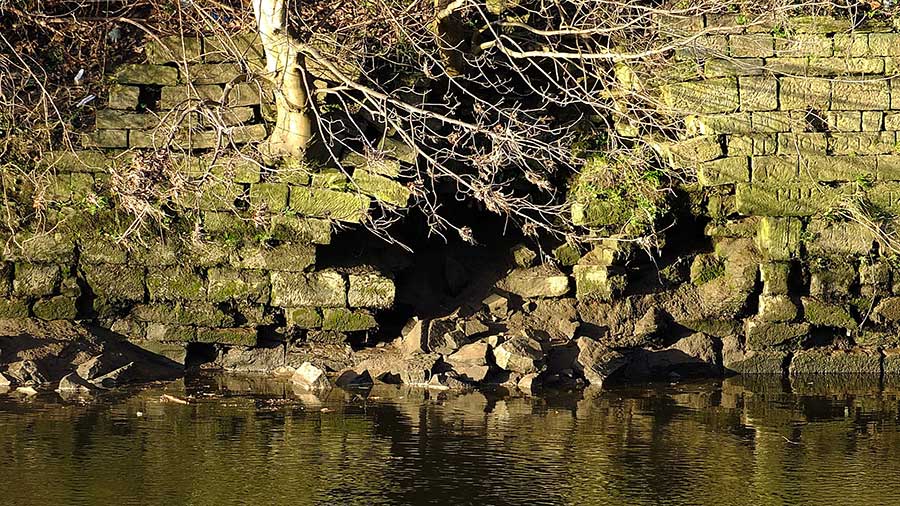Washington County Durham
HOME WHAT'S WHERE LOCAL COAL STAITHS TO PORT
Memories of River Wear
Keel Men's Grafitti
Keel Men's Graffiti
( North Bank of the River Wear, upstream from Fatfield Bridge )

THE GRAFFITI on NICHOLAS LAMBTON STAITH

THE GRAFFITI on NICHOLAS LAMBTON STAITH, nr NORTH BIDDICK SOCIAL CLUB
Look along the lowest 5 courses of stones. Although some of this may possibly be stone masons marks,
I am of the opinion that it was the Keel Men who produced the majority of it.
N.B. The Staith Wall is not easily accessible to passers-by and access could be dangerous!
[ Comments from Photographer Keith Cockerill - 1st Jan 2024 ]

NICHOLAS LAMBTON STAITH - NORTH BIDDICK SOCIAL CLUB, behind The Trees
[ Courtesy of Photographer Keith Cockerill - 1st Jan 2024 ]

CLOSE UP
[ Courtesy of Photographer Keith Cockerill - 1st Jan 2024 ]
• • ◊ • •
COMMENTS FROM KEITH COCKERILL
Oliver Cromwell banned the 'Royalist' coals of Newcastle and in the mid 1600s asked the 'Parliamentarian' town of Sunderland to supply London. Before this, Newcastle had a 'Royal Charter' to supply coals to the Capital and no other
North East port could do so! So from this time and through the 18th Century, staiths were built along the Riverside in Washington. Wooden waggon ways brought coal by gravity and horsepower to those staiths from the mines of County Durham.
From there it was taken downriver by keel boat for the Port of Sunderland to transport down the coast. The development of the steam engine and the building of overland waggon ways brought an end to the river transport of coal in the
early 19th Century, although both systems must have operated 'side by side' for some time. I'm not sure when the Nicholas Lambton Staith was built, but it is shown on a map of 1737 as belonging to a John Hedworth Esq. so the graffiti must date
to around and after this time! Lambton shipped coal downriver from his upriver 'estate staiths' before this of course. He was supplying coal to the salt panns at Sunderland in the 16th Century.
[ Many Thanks Keith. ]